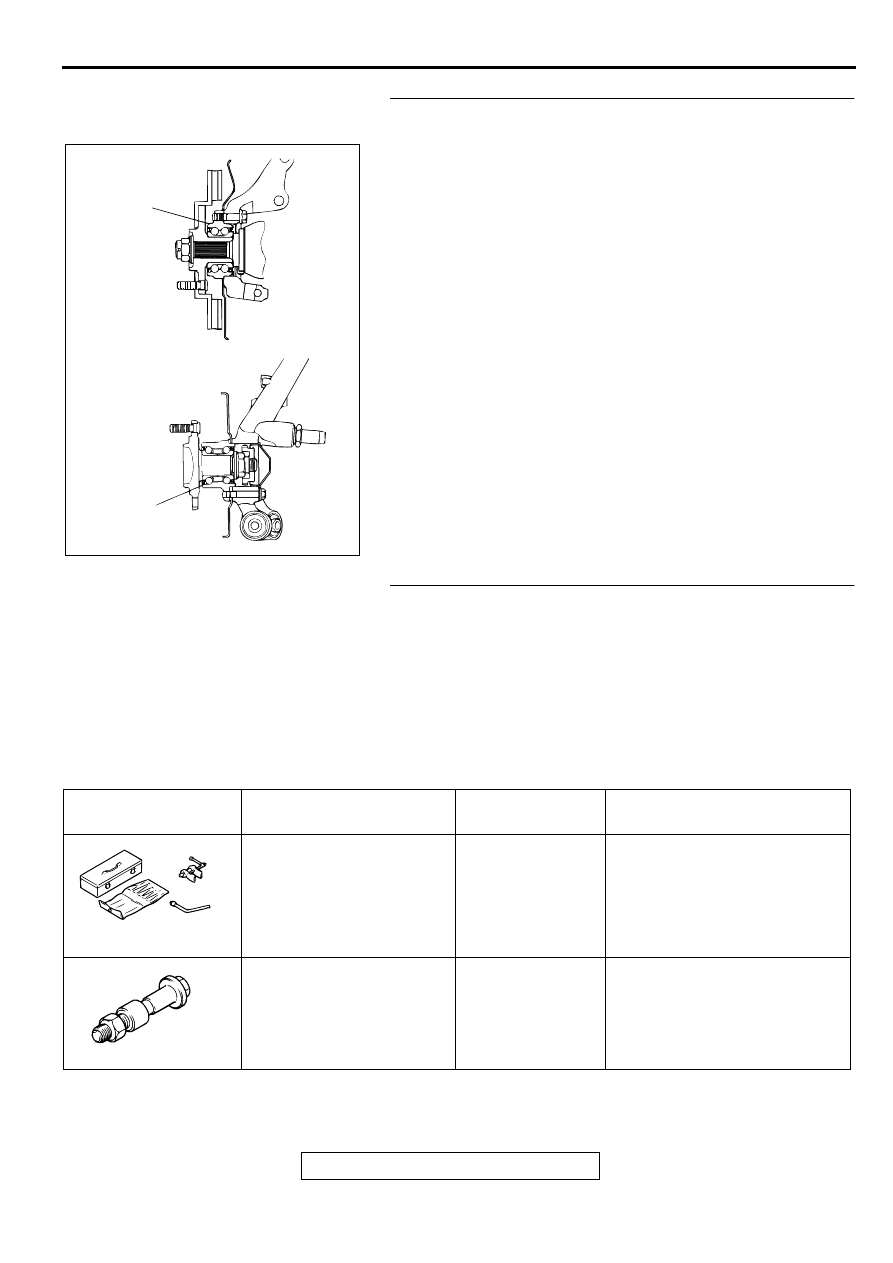Mitsubishi Eclipse / Eclipse Spyder (2000-2002). Service and repair manual - part 567

SPECIAL TOOLS
TSB Revision
BASIC BRAKE SYSTEM
35A-17
STEP 4. Check the wheel bearings for wear, damage or
dryness.
Q: Is there fault?
YES : Apply grease or replace the part. Then go to Step 5.
NO : Go to Step 5.
STEP 5. Recheck symptom.
Q: Is the symptom eliminated?
YES : Diagnosis is complete.
NO : Start over at step 1. If a new symptom surfaces, refer
to the symptom chart.
SPECIA L TO O LS
M1351000600081
AC000862
WHEEL
BEARING
WHEEL
BEARING
<FRONT>
<REAR>
AB
TOOL
TOOL NUMBER AND
NAME
SUPERSESSION
APPLICATION
MB990964
Brake tool set
A: MB990520
Disc brake piston expander
B: MB990619
Installer
General service
tool
•
Pushing-in of the disc brake
piston
•
Installation of the drum brake
wheel cylinder piston cup
MB990998
Front hub remover and
installer
MB990998-01
Provisional holding of the wheel
bearing
MB990964
A
B
MB990998